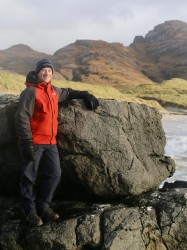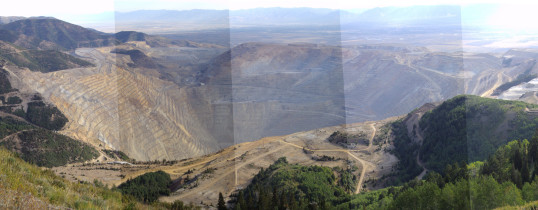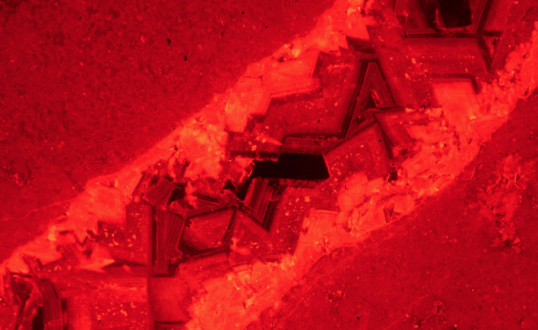Overview
Research within my group is focused on studies of large scale fluid flow in the Earth's crust and the genesis of hydrothermal ore deposits. We apply a range of techniques for tracing fluid flow pathways and determining mechanisms of rock alteration and metal transport and deposition in such systems, including mineral chemistry and fluid inclusion microanalysis, and transition metal isotope studies.
|
|
| The Bingham Canyon porphyry copper deposit, Utah |
Sampling MINERAL ARCHIVES
Zircon is an extremely robust archive of information on the evolution of magmas that may go on to form major mineral resources, like porphyry-copper deposits. We are studying zircon (and other igneous accessory minerals) to understand how arc magmas become 'fertile' (predisposed to form porphyry ore deposits), and the controls on signals, such as Eu/Eu* and Ce/Ce*, that have been considered as indicators of fertility, that can be useful for exploration (e.g., Nathwani et al., 2021).
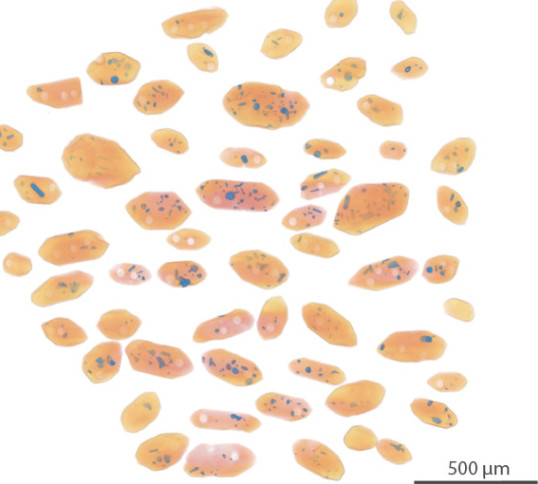 |
| Micro-CT scanned zircons from the La Granja porphyry system, Peru) |
Sampling ancient orefluids
Fluid inclusions are microscopic droplets of fluid trapped during crystal growth. These can be analysed using a variety of microanalytical techniques to directly access the properties of ancient ore-forming solutions (e.g. Wilkinson, 2001). We are currently one of the few groups in the world developing laser ablation ICPMS methods for the analysis of solutes in individual fluid inclusions and have pioneered the use of the 213nm UV laser ablation system for this purpose (Stoffell et al., 2004 - Warning! Large file size).
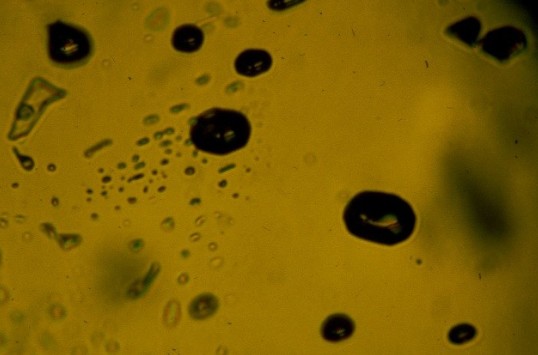 |
| Fluid inclusions in sphalerite from the Irish Zn-Pb orefield (width of view = 100 microns) |
Analysing 350 million year old seawater
In work carried out in Ireland, we extracted fluids from inclusions in quartz-carbonate-sulphide veins that were trapped about 350 million years ago. From their chemistry, we could determine that the fluids were derived from Carboniferous seawater and that this water had leached metals such as Zn, Pb and Ba from the crust during deep circulation within large fault zones (Wilkinson et al., 2005). On returning to the palaeoseafloor, these fluids mixed with porewaters enriched in hydrogen sulphide by sulphate reducing bacteria, resulting in the precipitation of large amounts of Zn and Pb sulphide within carbonate sediments. These ores are currently being exploited at Navan, Europe's largest zinc mine.
 |
| The Irish Midlands. Concealed beneath peat bog and farmland lie Zn-Pb ores formed beneath the seafloor, 350 million years ago. |
Seeing the invisible
Hydrothermal veins developed in tectonically active environments are generally composite structures formed from multiple episodes of vein opening, mineral precipitation, deformation and recrystallisation. In many cases it is difficult to recognise such multiple phases of vein growth, yet this is critical if fluid inclusions are to be used to elucidate the fluid history of a mineralised system and aid in producing a genetic model for mineralisation. For this reason, careful textural analysis of a vein system is an important precursor to detailed fluid inclusion studies
Unfortunately, many microscopic textural features are not easily resolved using conventional transmitted light microscopy, particularly at the scale important for fluid inclusion studies. In order to solve this problem, we use cathodoluminescence (see image below) as an essential tool for resolving multiple episodes of vein growth.
Cathodoluminescence (CL) is a property of minerals whereby the mineral emits light over a range of wavelengths as a result of electron transitions stimulated by high energy electron bombardment. The nature of the luminescence is controlled by a number of factors, principally chemical and structural defects in the mineral, which can either enhance or suppress luminescence. Most importantly, luminescence is generally characteristic of a specific phase of mineral growth under particular physico-chemical conditions and can therefore be used to distinguish different mineralisation events.
Cathodoluminescence studies, in combination with fluid inclusion microanalysis and micro-sample isotopic analysis, are now providing new insights into the complex hydrothermal evolution of mineralised systems (e.g. Wilkinson and Johnston, 1996).
|
|
| Cold-cathode cathodoluminescence image of growth-zoned dolomite vein from the Navan Zn-Pb deposit, Ireland (width of view = 2.5 mm). |
Recent support has come from NERC, BHP Minerals, Rio Tinto, Anglo American, Barrick Gold Corp., NERC-Industrial CASE studentships, Society of Economic Geologists.
Collaborators
Dr Mark Rehkamper, Imperial College London, Isotope geochemistry
Dr Andrew Berry, Imperial College London, Metal transport in hydrothermal fluids
Dr Dominik Weiss, Imperial College London, Transition metal isotopes

